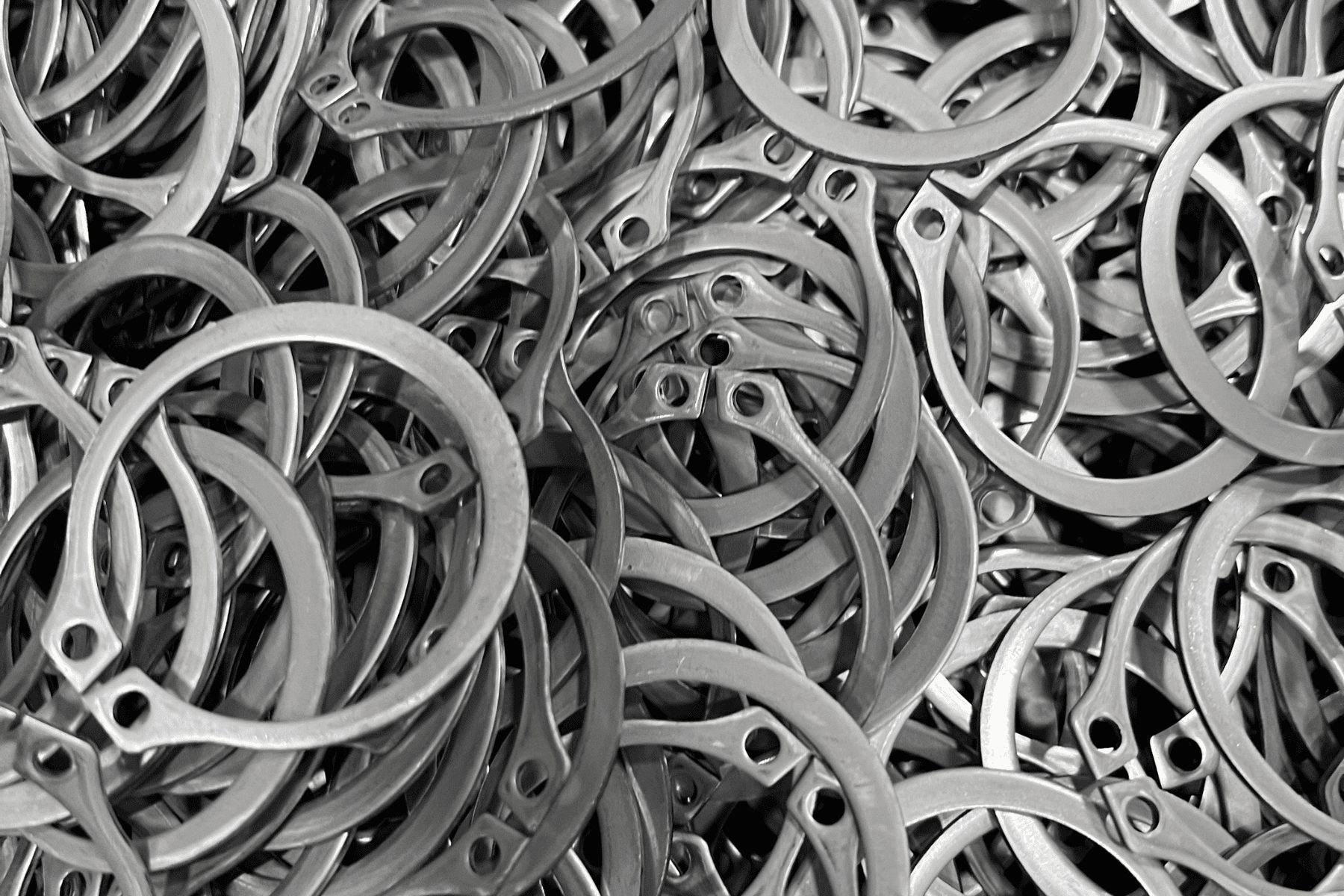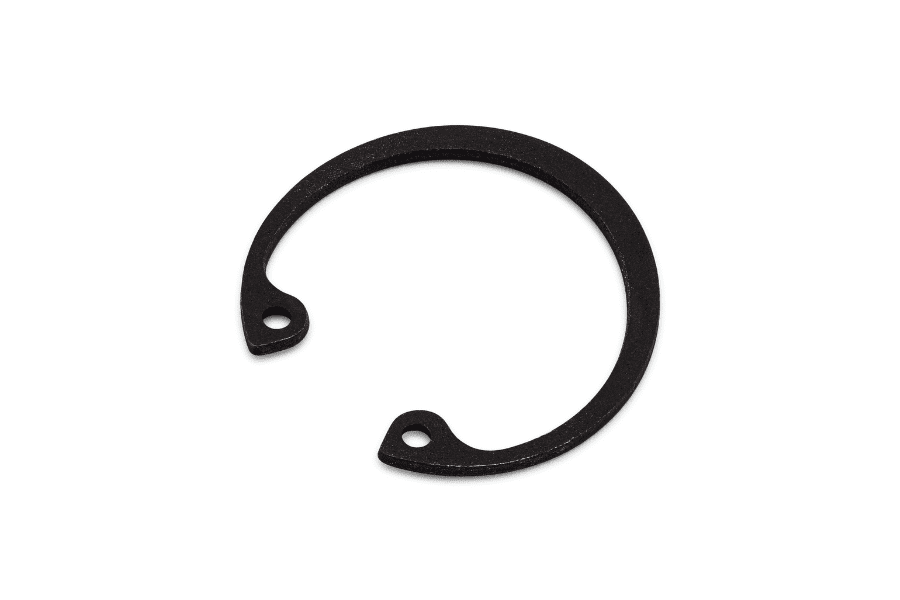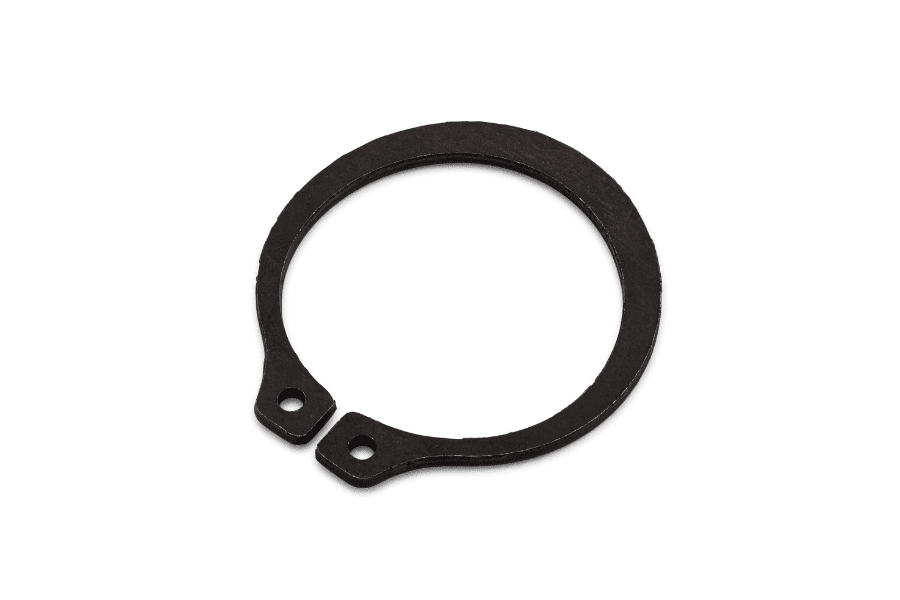
Beveled & Bowed Retaining Rings
Secure mechanical components against axial movement
Beveled Retaining Rings
Beveled retaining rings serve the same purpose but they work on a different principle. Advantage is taken of the ring’s spring characteristics, but in the ring’s own plane. The internal retaining ring has a 15 degree bevel along the outer periphery, and the external retaining ring has it along the inner edge. The groove profile corresponds to that of the ring, with the beveled wall bearing the load. Here, the calculation of groove location is of the utmost importance.
The internal ring is compressed to less than its free diameter, whereas the eternal ring is spread more than it’s free diameter. The spring properties of the rings will cause the internal type to open and the external type to close more completely, in each case exerting axial pressure against the retained part.
The groove location must be precise to prevent full bottoming of the retaining ring in the groove. The ring acts as a wedge between the groove wall and the part, which it locks rigidly. The assembly will not “breathe” as with bowed retaining rings which may deflect under load.
While the beveled edge of the ring moves along the beveled groove wall for further endplay take-up, until it may conceivably reach the position shown for maximum groove engagement, it cannot back out, even under load.

Bowed Retaining Rings
Retaining Rings can be used to compensate for accumulated tolerances, wear in the assembly, and also to exert pressure against their retained parts. Most retaining rings are made from spring materials and are heat-treated to retain their resiliency. Bowed retaining rings can be flattened under pressure and will return to their set height when pressure is released. When the ring is flattened either partially or completely, it exerts counter-pressure in much the same way as a spring, taking up endplay.

Because of their resiliency, bowed retaining rings will follow any axial movement of the retained part within the limitations of the bow height. However, precision loading is not the only design goal for their use. Bowed rings produce a compressive force to reduce chatter and vibration in an application.
Grooves are required to be much wider than for that of other retaining rings. The additional width is necessary to accommodate the over-all thickness and bow-height of the rings. The location of the load bearing wall must be established with care, because it determines the extent to which the ring’s bowed construction will be utilized. In all other respects, the rules for proper groove preparation are the same as for basic retaining rings.
More than Parts. A True Partnership.
Our passion is creating the best rings, springs, and clamps. Our mission is to make your work a success. We are here for you.



